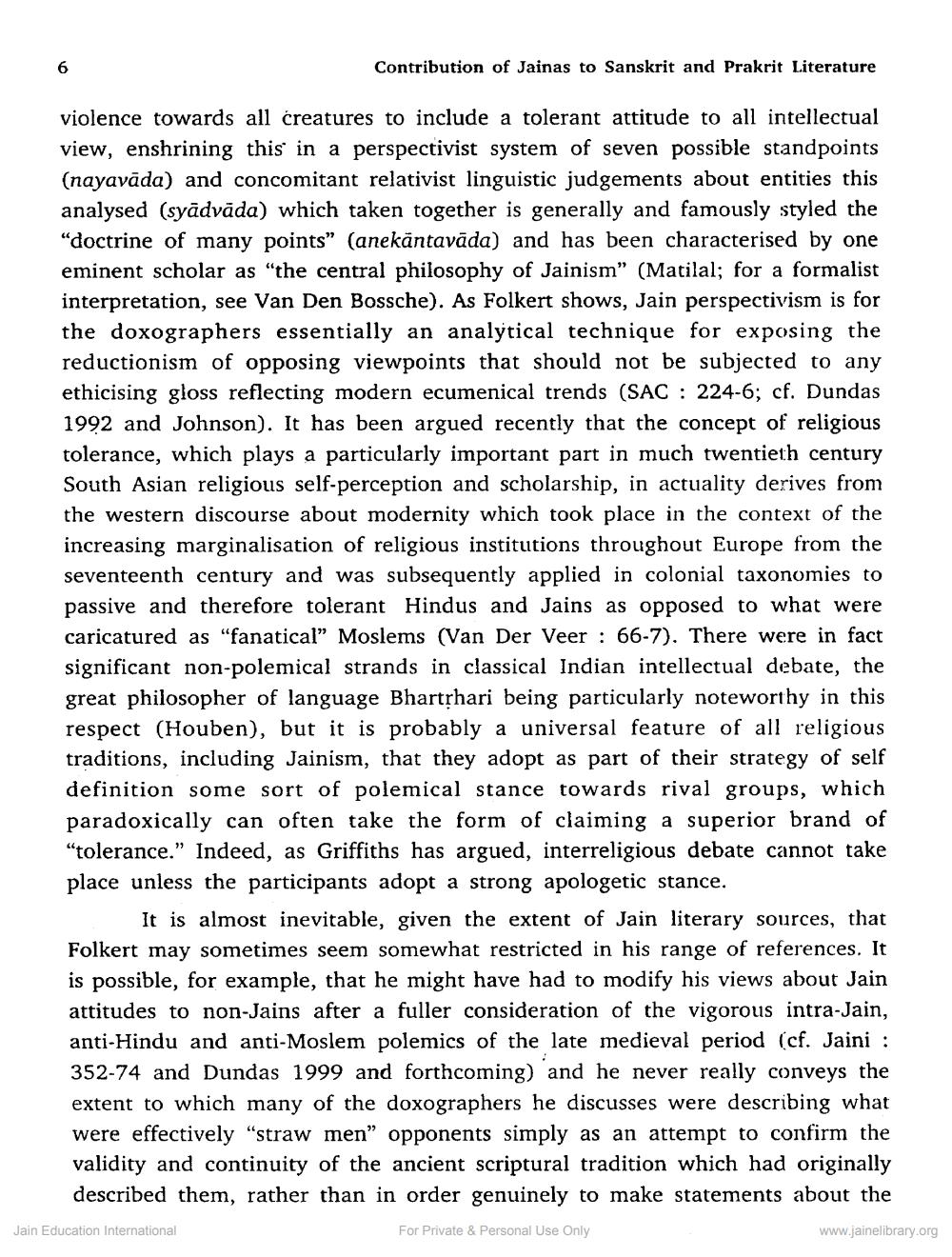________________
Contribution of Jainas to Sanskrit and Prakrit Literature
violence towards all creatures to include a tolerant attitude to all intellectual view, enshrining this in a perspectivist system of seven possible standpoints (nayavāda) and concomitant relativist linguistic judgements about entities this analysed (syādvāda) which taken together is generally and famously styled the "doctrine of many points” (anekāntavāda) and has been characterised by one eminent scholar as "the central philosophy of Jainism” (Matilal; for a formalist interpretation, see Van Den Bossche). As Folkert shows, Jain perspectivism is for the doxographers essentially an analytical technique for exposing the reductionism of opposing viewpoints that should not be subjected to any ethicising gloss reflecting modern ecumenical trends (SAC : 224-6; cf. Dundas 1992 and Johnson). It has been argued recently that the concept of religious tolerance, which plays a particularly important part in much twentieth century South Asian religious self-perception and scholarship, in actuality derives from the western discourse about modernity which took place in the context of the increasing marginalisation of religious institutions throughout Europe from the seventeenth century and was subsequently applied in colonial taxonomies to passive and therefore tolerant Hindus and Jains as opposed to what were caricatured as "fanatical” Moslems (Van Der Veer : 66-7). There were in fact significant non-polemical strands in classical Indian intellectual debate, the great philosopher of language Bhartshari being particularly noteworthy in this respect (Houben), but it is probably a universal feature of all religious traditions, including Jainism, that they adopt as part of their strategy of self definition some sort of polemical stance towards rival groups, which paradoxically can often take the form of claiming a superior brand of "tolerance." Indeed, as Griffiths has argued, interreligious debate cannot take place unless the participants adopt a strong apologetic stance.
It is almost inevitable, given the extent of Jain literary sources, that Folkert may sometimes seem somewhat restricted in his range of references. It is possible, for example, that he might have had to modify his views about Jain attitudes to non-Jains after a fuller consideration of the vigorous intra-Jain, anti-Hindu and anti-Moslem polemics of the late medieval period (cf. Jaini : 352-74 and Dundas 1999 and forthcoming) and he never really conveys the extent to which many of the doxographers he discusses were describing what were effectively “straw men” opponents simply as an attempt to confirm the validity and continuity of the ancient scriptural tradition which had originally described them, rather than in order genuinely to make statements about the
Jain Education International
For Private & Personal Use Only
www.jainelibrary.org




